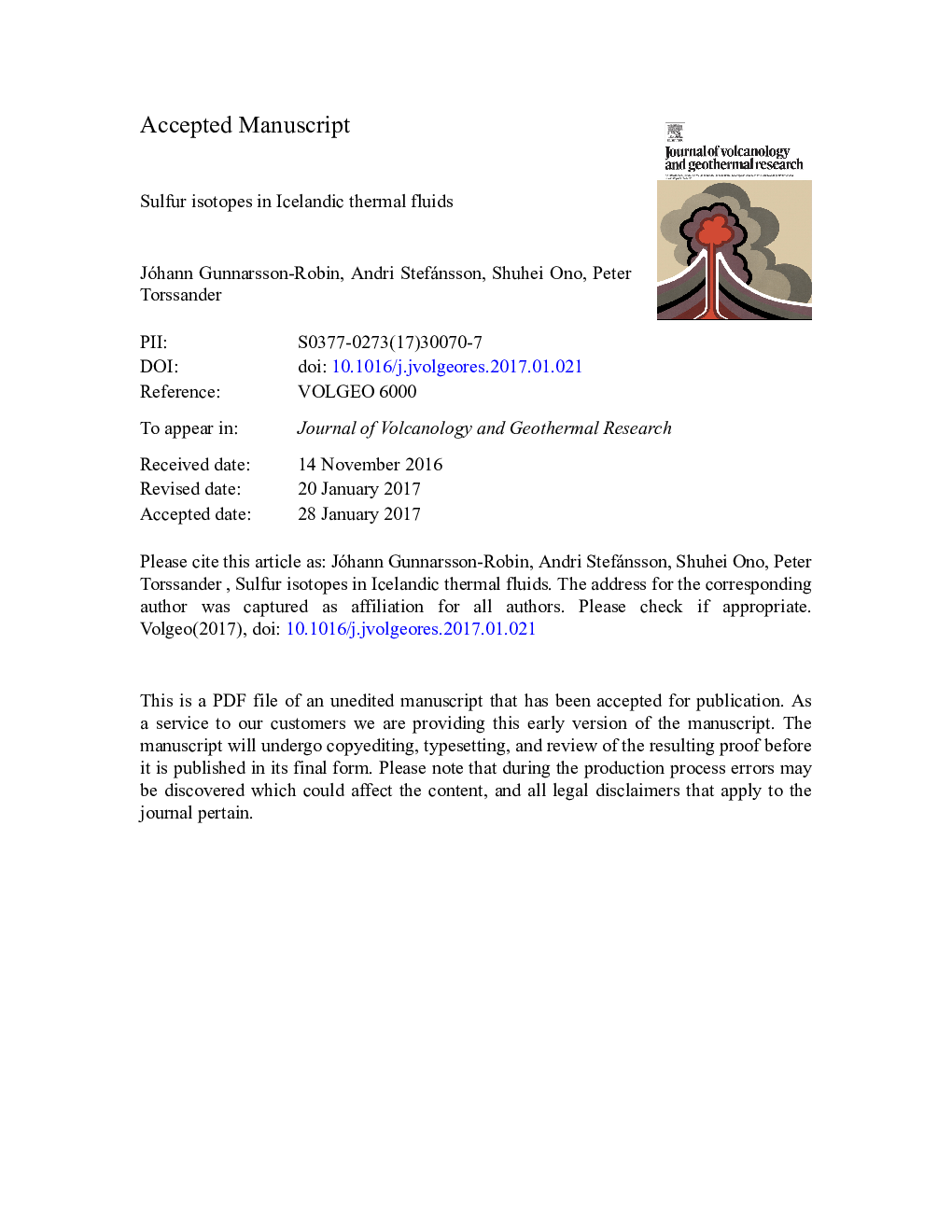| Article ID | Journal | Published Year | Pages | File Type |
|---|---|---|---|---|
| 8911488 | Journal of Volcanology and Geothermal Research | 2017 | 68 Pages |
Abstract
Multiple sulfur isotope compositions of thermal fluids from Iceland were measured in order to evaluate the sources and reactions of sulfur and sulfur isotope fractionation in geothermal systems at Icelandic divergent plate boundaries, characterized by MORB-like basalts. The geothermal systems studied had a wide range of reservoir temperatures of 56-296 °C and Cl concentrations of 18-21,000 ppm. Dissolved sulfide (â Sâ II) and SO4 concentrations in liquid water measured < 0.01-165 ppm and 1.3-300 ppm, respectively, and H2S(g) concentrations in the vapor 4.9-2000 ppm. The δ34S and Î33S values for different phases and oxidation states were highly variable: δ34Sâ Sâ II = â 11.6 to 10.5â° (n = 99), â33Sâ Sâ II = â 0.12 to 0.00â° (n = 45), δ34SSO4 = â 1.0 to 24.9â° (n = 125), â33SSO4 = â 0.04 to 0.02â° (n = 50), δ34SH2S(g) = â 2.6 to 5.9â° (n = 112) and â33SH2S(g) = â 0.03 to 0.00â° (n = 56). The multiple sulfur isotope values of the thermal fluids are interpreted to reflect various sources of sulfur in the fluids, as well as isotope fractionation occurring within the geothermal systems associated with fluid-rock interaction, boiling and oxidation and reduction reactions. The results of isotope geochemical modeling demonstrate that the sources of Sâ II in the thermal fluid are leaching of basalt (MORB) and seawater SO4 reduction for saline systems with insignificant magma gas input, and that the observed ranges of δ34S and Î33S for â Sâ II and H2S(g) reflect isotope fractionation between minerals and aqueous and gaseous species upon fluid-rock interaction and boiling. The sources of SO4 are taken to be multiple, including oxidation of Sâ II originating from basalt, leaching of SVI from the basalts and the seawater itself in the case of saline systems. In low-temperature fluids, the δ34S and Î33S values reflect the various sources of sulfur. For high-temperature fluids, fluid-rock interaction, â Sâ II oxidation and SO4 reduction and sulfide and sulfate mineral formation result in a large range of δ34S and Î33S values for â Sâ II and SO4 in the fluids, highlighting the importance and effects of chemical reactions on the isotope systematics of reactive elements like sulfur. Such effects needed to be quantified in order to reveal the various sources of an element.
Related Topics
Physical Sciences and Engineering
Earth and Planetary Sciences
Geochemistry and Petrology
Authors
Jóhann Gunnarsson-Robin, Andri Stefánsson, Shuhei Ono, Peter Torssander,
